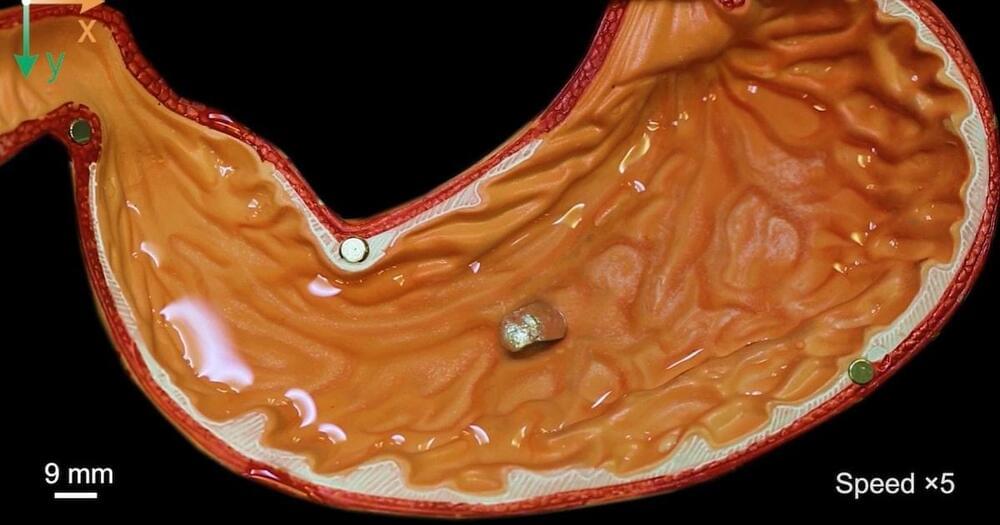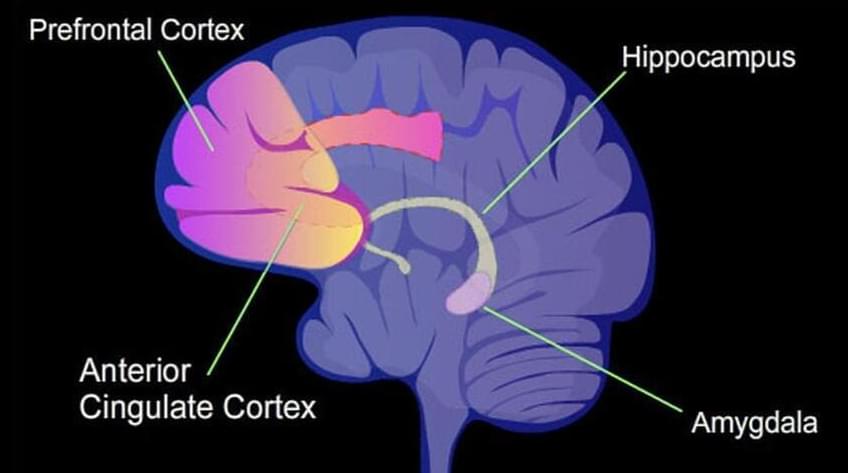A robot made from magnetic particles and gallium can easily change states — making it useful for a broad range of applications in medicine and manufacturing.




In general, we tend to operate on a default assumption that other people are basically truthful and trustworthy. The growth in fake profiles and other artificial online content raises the question of how much their presence and our knowledge about them can alter this “truth default” state, eventually eroding social trust.
Changing Our Defaults
The transition to a world where what’s real is indistinguishable from what’s not could also shift the cultural landscape from being primarily truthful to being primarily artificial and deceptive.

Amazon employees are quickly discovering ChatGPT’s vast potential as a work assistant.
ChatGPT, the eerily intelligent chatbot that blew up since its November release, has been used in a number of different job functions at Amazon, according to internal Slack messages obtained by Insider. That includes answering job interview questions, writing software code, and creating training documents, as Insider previously reported.
One employee said in the Slack channel that the Amazon Web Services cloud unit has created a small working group to better understand AI’s impact on its business. Through testing, this team found ChatGPT does a “very good job” at answering AWS customer support questions, as most answers are based on public information. The AI tool was also “great” at creating training documents and “very strong” in corporate strategy questions.

A new neuroimaging study showed that people suffering from posttraumatic stress disorder (PTSD) exhibited increased activation in the amygdala region of the brain when shown surprised and neutral facial expressions. The same phenomenon was observed in identical twins of these individuals who did not suffer from PTSD.
The study, which was published in the Journal of Psychiatric Research, sheds new light on the neural mechanisms underlying the development of PTSD.
PTSD is a condition that develops in approximately 20% of individuals exposed to psychological trauma in their lifetime. It is defined by wide clusters of symptoms that include intrusive memories, negative alterations in mood, heightened levels of arousal, and other symptoms. Currently, there are many treatment options available for PTSD; however, for some patients, the treatments offered do not provide clinical relief.

Threat actors associated with the Roaming Mantis attack campaign have been observed delivering an updated variant of their patent mobile malware known as Wroba to infiltrate Wi-Fi routers and undertake Domain Name System (DNS) hijacking.
Kaspersky, which carried out an analysis of the malicious artifact, said the feature is designed to target specific Wi-Fi routers located in South Korea.
Roaming Mantis, also known as Shaoye, is a long-running financially motivated operation that singles out Android smartphone users with malware capable of stealing bank account credentials as well as harvesting other kinds of sensitive information.
Connor Leahy from Conjecture joins the podcast to discuss AI safety, the fragility of the world, slowing down AI development, regulating AI, and the optimal funding model for AI safety research. Learn more about Connor’s work at https://conjecture.dev.
Timestamps:
00:00 Introduction.
00:47 What is the best way to understand AI safety?
09:50 Why is the world relatively stable?
15:18 Is the main worry human misuse of AI?
22:47 Can humanity solve AI safety?
30:06 Can we slow down AI development?
37:13 How should governments regulate AI?
41:09 How do we avoid misallocating AI safety government grants?
51:02 Should AI safety research be done by for-profit companies?
Social Media Links:
➡️ WEBSITE: https://futureoflife.org.
➡️ TWITTER: https://twitter.com/FLIxrisk.
➡️ INSTAGRAM: https://www.instagram.com/futureoflifeinstitute/
➡️ META: https://www.facebook.com/futureoflifeinstitute.
➡️ LINKEDIN: https://www.linkedin.com/company/future-of-life-institute/
The AI battle is heating up as Google’s Sparrow chatbot gears up to take on OpenAI’s ChatGPT. Will Sparrow be the one to reach AGI? Don’t miss out on this exciting competition!
• •••••••••••••••••••••••••••••••••••••••••••••••••••••••••••••
🔔 Did you enjoy the content? Subscribe here:
- https://rb.gy/nekyhx.
🎥 Want to watch more? Find videos here:
- https://rb.gy/l03r32
⚠️ Copyright Disclaimers.
• Section 107 of the U.S. Copyright Act states: “Notwithstanding the provisions of sections 106 and 106A, the fair use of a copyrighted work, including such use by reproduction in copies or phonorecords or by any other means specified by that section, for purposes such as criticism, comment, news reporting, teaching (including multiple copies for classroom use), scholarship, or research, is not an infringement of copyright.”
• We use images and content in accordance with the YouTube Fair Use copyright guidelines.

Through the issue of mental representation addressed in the previous article, it is possible to get a first idea about the theoretical discontinuity between traditional cognitive science and more recent approaches gathered under the umbrella of so-called 4E Cognition. In fact, in many cases those latter reflect — directly or in a collateral way — the attempt to overcome the problem of representation in human cognition, even thought, as we’re going to say, this doesn’t entail a unite consensus at all.
4E Cognition has not to be seen as a specific and well-defined theoretical system, rather, it is a term referring to all those works (hypothesis, theories, experiments, etc.) which deviate from the traditional representational-computational model of cognition (see part 1), taking a dynamic and enactive approach, namely, conceiving cognition as embodied, embedded, enactive and extended (that’s why 4E). In a nutshell, mental states and cognitive processes would be: embodied when they are partly constituted by bodily processes; embedded when there is an essential causal dependence between such states and processes and the environment; enacted when the actions of the subject can partly constitute these states and processes; and extended when objects or processes in the environment can partly constitute those states and processes [4].
Here you can find a quick conversational introduction to 4E cognition made by professor Shaun Gallagher:
Please join the Project on Nuclear Issues for a book launch event, featuring “The Fragile Balance of Terror: Deterrence in the Nuclear Age.”
In The Fragile Balance of Terror, edited by Vipin Narang and Scott Sagan, the foremost experts on nuclear policy and strategy offer insight into an era rife with more nuclear powers. Some of these new powers suffer domestic instability, others are led by pathological personalist dictators, and many are situated in highly unstable regions of the world—a volatile mix of variables. The increasing fragility of deterrence in the twenty-first century is created by a confluence of forces: military technologies that create vulnerable arsenals, a novel information ecosystem that rapidly transmits both information and misinformation, nuclear rivalries that include three or more nuclear powers, and dictatorial decision making that encourages rash choices. The nuclear threats posed by India, Pakistan, Iran, and North Korea are thus fraught with danger.
Audience questions: https://forms.gle/t1ecgsgib9hhFjAC8
This event is made possible by general CSIS support.
A nonpartisan institution, CSIS is the top national security think tank in the world.
Visit www.csis.org to find more of our work as we bring bipartisan solutions to the world’s greatest challenges.
Want to see more videos and virtual events? Subscribe to this channel and turn on notifications: https://cs.is/2dCfTve.
Follow CSIS on:
• Twitter: www.twitter.com/csis.
• Facebook: www.facebook.com/CSIS.org.
• Instagram: www.instagram.com/csis/